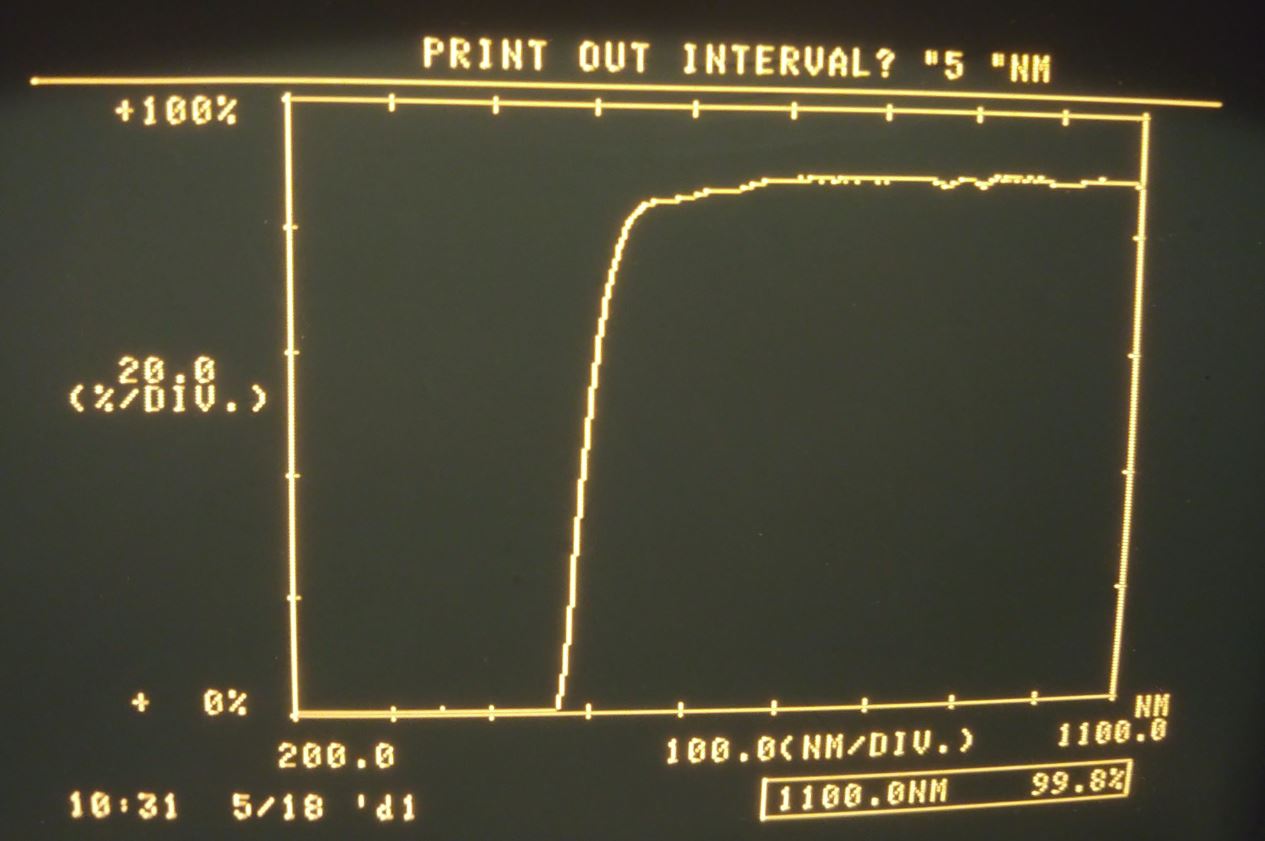Have you ever wondered if the yellow/orange plastic windows that all resin/SLA 3D printers have are sufficient?
Here’s your answer:

interesting data points:
- 500nm: 54.9% (transmission)
- 490nm: 37.9%
- 480nm: 16.9%
- 470nm: 1.6%
- 460nm: 0.3%
**What does this mean? Feel free to comment. **
My take:
First of all, this instrument is not designed to measure OD, so it can barely measure down to OD3. The actual value for 400-450nm could be lower (e.g. 0.001-0.0001% transmission).
SLA 3D printers work at 405nm. This means that the enclosure will likely protect you from the UV radiation of the printer. This is good news.
Does it also protect the resin from sunlight? To answer this question, it is important to understand how the resin behaves to wavelengths above 460nm (not measured). In my practical experience, it does not provide adequate protection. Clean the vat after each print or add another light-blocking layer for (short-term) storage.-


I’m confused, are you implying that 3D printers are giving off harmful UV light? Because they only use UV-A, which is non-ionizing and won’t damage your skin any more than regular sunlight (actually, it’ll damage it less.)
What is the impact of the light on your eyes?
As a rule, avoid being on the same room as UV sources. Unless you are pretty sure that what you have is not damaging. But most people just buy a full printer; those have no idea at all.
Again, the impact is nothing more than that from a standard lightbulb. Should you stare right at the UV LED at full intensity? Probably not. But should a small amount shining through a filtered medium be of any concern? Not at all.